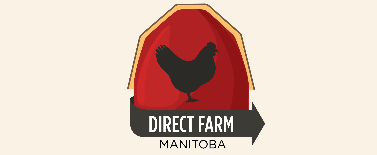The Food We Eat – Part of a Lifestyle
 Friday, August 26, 2016 at 12:14PM
Friday, August 26, 2016 at 12:14PM Eric Rempel
In the last month, those of us who are gardeners have become busy harvesting our produce, eating some of it, and putting other produce up for the winter. Gardening, particularly food production may be something we do because it is an activity we enjoy, but it can also be something more. The food we produce and the food we eat can be an aspect of stewardship and of right living for us.
We are told that 80% of the food grown in Manitoba is exported from this province, and 80% of the food consumed in the province is imported. We are also told that the average distance food moves before it gets onto our dining room table is 1500 miles. A critical visit to the grocery store will confirm this. Tinned food will have come from southern Ontario, if not further away. Boxed food could come from just about anywhere in North America. Meat may come from a Manitoba source, but there are days when Manitoba grown meat may not be available at your favourite grocer. Produce? What portion of the produce section is Manitoba grown. We have our Peak of the Market produce, but it occupies a very small portion of the produce section. Sometimes Peak of the Market produce is not available. Such a situation may be OK for Iqaluit or Resolute Bay, but is it acceptable for Steinbach.
You don't need a masters degree in mathematics to know that the amount of energy going into the production of the tin can that holds your supper is out of proportion to the energy that food will give you when you eat it. Surely there are better, more efficient ways of getting good nutrition onto my dinner table than transporting lettuce, tomatoes and strawberries from California to Steinbach. The price for this energy inefficiency will need to be paid, and it will be paid for by our children and grandchildren.
There are other ways of doing things. Those of us who are a little older can remember when the grocery store was the place to buy salt, sugar and perhaps rice. Everything else came from the garden or the barn. And we were healthy, perhaps healthier then than we are today. Today there are those in our community who don't buy any vegetables at the grocery store. All the vegetables they consume come from their garden or from local vegetable growers. It can be done!
But if we are going to do things differently, we will need to begin thinking about it before we get to the grocery store, in fact now is a good time. The alternative to super-market living takes planning – because the alternative to a super-market food shelf is not another food shelf elsewhere. The alternative is a lifestyle.
The switch is challenging and takes time. But when you really think about it, can anything else be considered responsible living?
Some of us get together to talk about these things. We call ourselves the South Eastman Transition Initiative. Join us.



Reader Comments